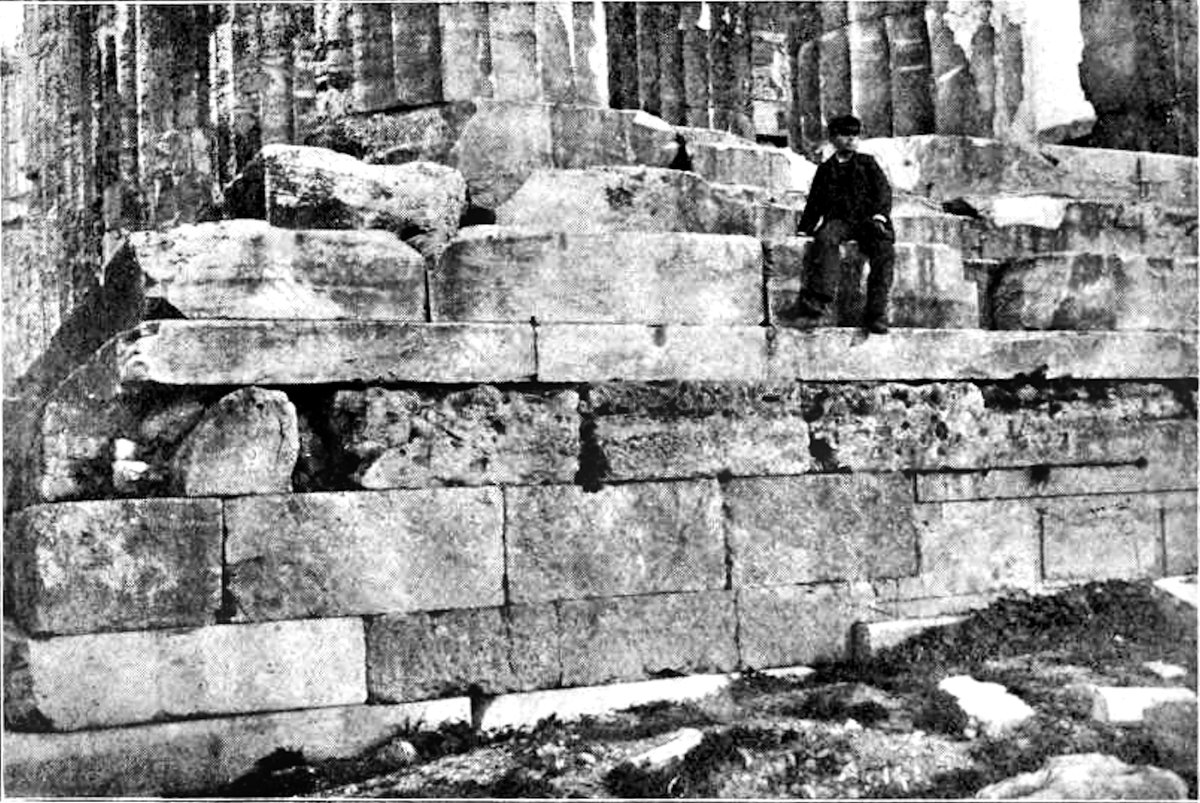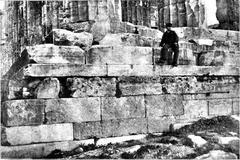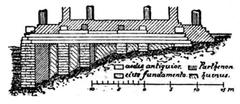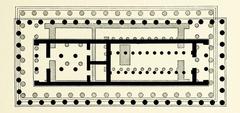
Older Parthenon Athens: Visiting Hours, Tickets, and Historical Sites Guide
Date: 14/06/2025
Introduction
The Older Parthenon—also known as the “Pre-Parthenon”—is a remarkable yet often overlooked chapter in the story of Athens’ Acropolis. Built around 488–480 BCE as a grand tribute to Athena Polias, the temple stood as a testament to Athenian ambition following the Battle of Marathon. Though destroyed in the Persian invasion of 480 BCE, its ruins and artifacts, preserved beneath the iconic Classical Parthenon, continue to illuminate Athens’ resilience, religious devotion, and architectural prowess. This detailed guide will help you explore the Older Parthenon’s history, its archaeological remains, and provide practical advice on visiting hours, tickets, accessibility, and nearby historical sites. For further historical context and visitor details, see Through Eternity, The Travel, and The Archaeologist.
Table of Contents
- Introduction
- Early Sacred Use of the Acropolis
- Construction and Destruction of the Older Parthenon
- Archaeological Evidence and Museum Collections
- Visiting the Older Parthenon: Practical Information
- Nearby Historical Attractions
- Tips for a Memorable Visit
- Frequently Asked Questions
- Legacy and Continuing Research
- Summary and Recommendations
- Sources and Further Reading
Early Sacred Use of the Acropolis
The Acropolis has served as a religious and civic center since the Mycenaean era. By the early 5th century BCE, it was home to various shrines, especially dedicated to Athena, Athens’ patron goddess. The Older Parthenon was erected on the very site where the Classical Parthenon now stands, marking the city’s growing status and piety (Through Eternity; The Travel).
Construction and Destruction of the Older Parthenon
Post-Marathon Athens and Building Ambition
Athenians, emboldened by their victory at Marathon in 490 BCE, began constructing the Older Parthenon around 488–480 BCE to honor Athena Parthenos. The temple’s scale and use of marble and limestone reflected both religious devotion and the city’s newfound power (Through Eternity).
Architectural Features
The temple was a large, east-west oriented Doric building. While only its foundations and column drums survive, these remains indicate a structure that prefigured the Classical Parthenon in scale and ambition. Excavations have revealed sculptural fragments and marble pieces used in its construction (Vacatis).
Persian Invasion and Destruction
In 480 BCE, Persian forces invaded and sacked Athens, burning the Acropolis and destroying the Older Parthenon. The aftermath is visible in the layers of ash and the so-called “Persian debris” recovered by archaeologists (Europe Facts and Details; The Travel).
The Oath of Plataea
After the Persian Wars, Athenians swore not to rebuild their destroyed temples until the end of the conflict, leaving the ruins as a powerful war memorial for decades (Through Eternity).
Archaeological Evidence and Museum Collections
Systematic excavations between 1885 and 1890 revealed the Older Parthenon’s massive foundations beneath the Classical Parthenon (The Archaeologist). Significant finds include the “Kritios Boy” and “Pit of the Maidens” Korae statues—now displayed at the Acropolis Museum (The Travel; Vacatis). These artifacts provide valuable insight into pre-Classical Athenian art and religious practice.
Visiting the Older Parthenon: Practical Information
Visiting Hours
- April to October: 8:00 AM – 8:00 PM
- November to March: 8:00 AM – 5:00 PM
- Note: Hours may vary on public holidays—check the official website for updates.
Tickets and Entry
- General Admission: €20 (April–October), €10 (November–March)
- Discounts: Available for EU citizens aged 18–25, children, and seniors
- Combined Tickets: Access to the Acropolis, Acropolis Museum, Ancient Agora, and more
- Where to Buy: Purchase online via the Official Acropolis Ticket Office or at the entrance (acropolis-greece.com).
Accessibility
The Acropolis has ramps and an elevator for visitors with reduced mobility, though the terrain can still be challenging. The Acropolis Museum is fully accessible (takemetoeuropetours.com).
Guided Tours and Audio Guides
Guided tours, often available in multiple languages, are recommended for a deeper understanding. Audio guides and digital companion apps can be rented onsite or downloaded in advance (acropolis-tickets.com).
Nearby Historical Attractions
- Acropolis Museum: Houses many artifacts from both the Older and Classical Parthenons (Acropolis Museum).
- Ancient Agora: The civic heart of ancient Athens.
- Temple of Hephaestus & Theatre of Dionysus: Within walking distance, these sites add context to your Acropolis visit.
- Plaka Neighborhood: Offers charming streets, local dining, and shops (thetraveltinker.com).
Tips for a Memorable Visit
- Best Time to Visit: Early morning or late afternoon for fewer crowds and gentler weather (The Acropolis of Athens).
- Footwear: Wear comfortable, slip-resistant shoes; the marble can be slippery (earthtrekkers.com).
- Sun Protection: Bring hats, sunscreen, and water—shade is minimal.
- Duration: Allocate at least 2–3 hours, including time at the Acropolis Museum.
- Photography: Permitted, but drones are prohibited; tripods may require special permission.
- Free Admission Days: Check for select dates with free entry (acropolis-greece.com).
Frequently Asked Questions
Q: What are the Older Parthenon visiting hours?
A: The Acropolis site is open from 8:00 AM to 8:00 PM in summer and 8:00 AM to 5:00 PM in winter, with holiday exceptions.
Q: How do I buy tickets?
A: Purchase tickets online via the Official Acropolis Ticket Office or at the site entrance.
Q: Is the site accessible for visitors with disabilities?
A: The Acropolis offers ramps and an elevator; the museum is fully accessible.
Q: Are there guided tours about the Older Parthenon?
A: Yes, many tours focus on the archaeological layers, including the Older Parthenon.
Q: Where can I see artifacts from the Older Parthenon?
A: Many are housed in the Acropolis Museum.
Legacy and Continuing Research
The destruction and preservation of the Older Parthenon mark a pivotal transition from the Archaic to Classical eras in Athens. Its remains are a symbol of resilience, bridging the city’s pre- and post-Persian War identity (Definitely Greece). Ongoing archaeological research continues to reveal new insights into ancient Greek religion, art, and construction techniques (The Archaeologist).
Summary and Visitor Recommendations
A visit to the Older Parthenon is a journey into Athens’ ancient heritage. The ruins and artifacts, especially those at the Acropolis Museum, offer a rare glimpse into the city’s resilience and devotion to Athena. For the best experience, plan your visit early, wear appropriate footwear, bring water and sun protection, and consider a guided tour or audio guide. Combine your Acropolis exploration with nearby historical sites and the vibrant Plaka neighborhood. Stay informed about opening hours, ticketing, and special events via official channels and enhance your experience with the Audiala app for audio guides and current updates. For further reading, consult Definitely Greece, Acropolis Museum, and Athens Tourism.
Sources and Further Reading
- Uncovering the History of the Parthenon in Athens – Through Eternity
- What to Know About the Parthenon of Greece – The Travel
- Excavating the Foundations of the Parthenon: Unveiling Ancient Secrets – The Archaeologist
- The Parthenon – History.com
- Future Entry Ticket for Acropolis of Athens with Digital Companion Guide – acropolis-greece.com
- Visit Acropolis: Opening Hours, Location & Entrance – acropolis-tickets.com
- History of the Parthenon – Definitely Greece
- Athens Official City Guide – Athens Tourism






















































































